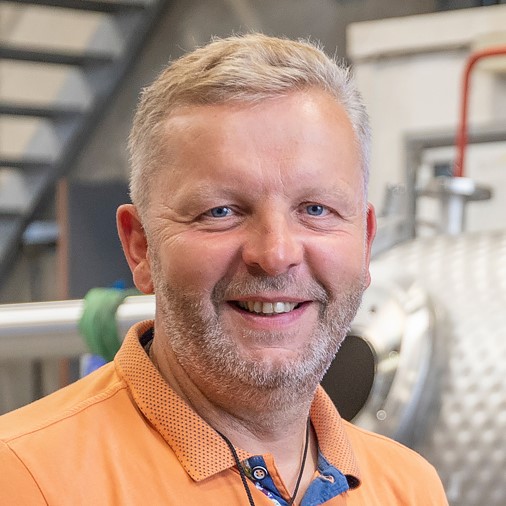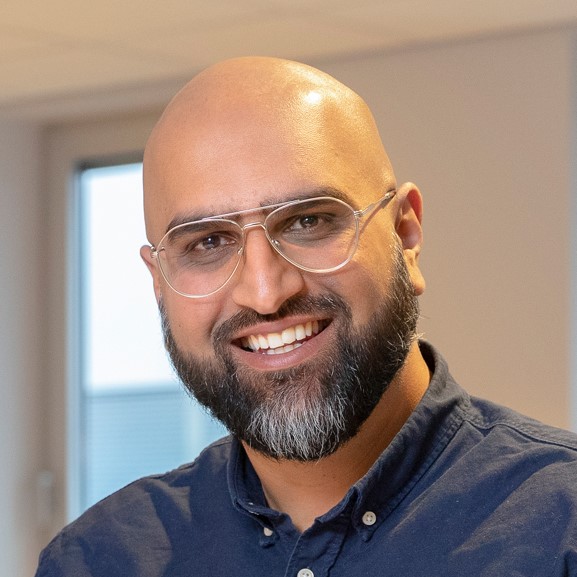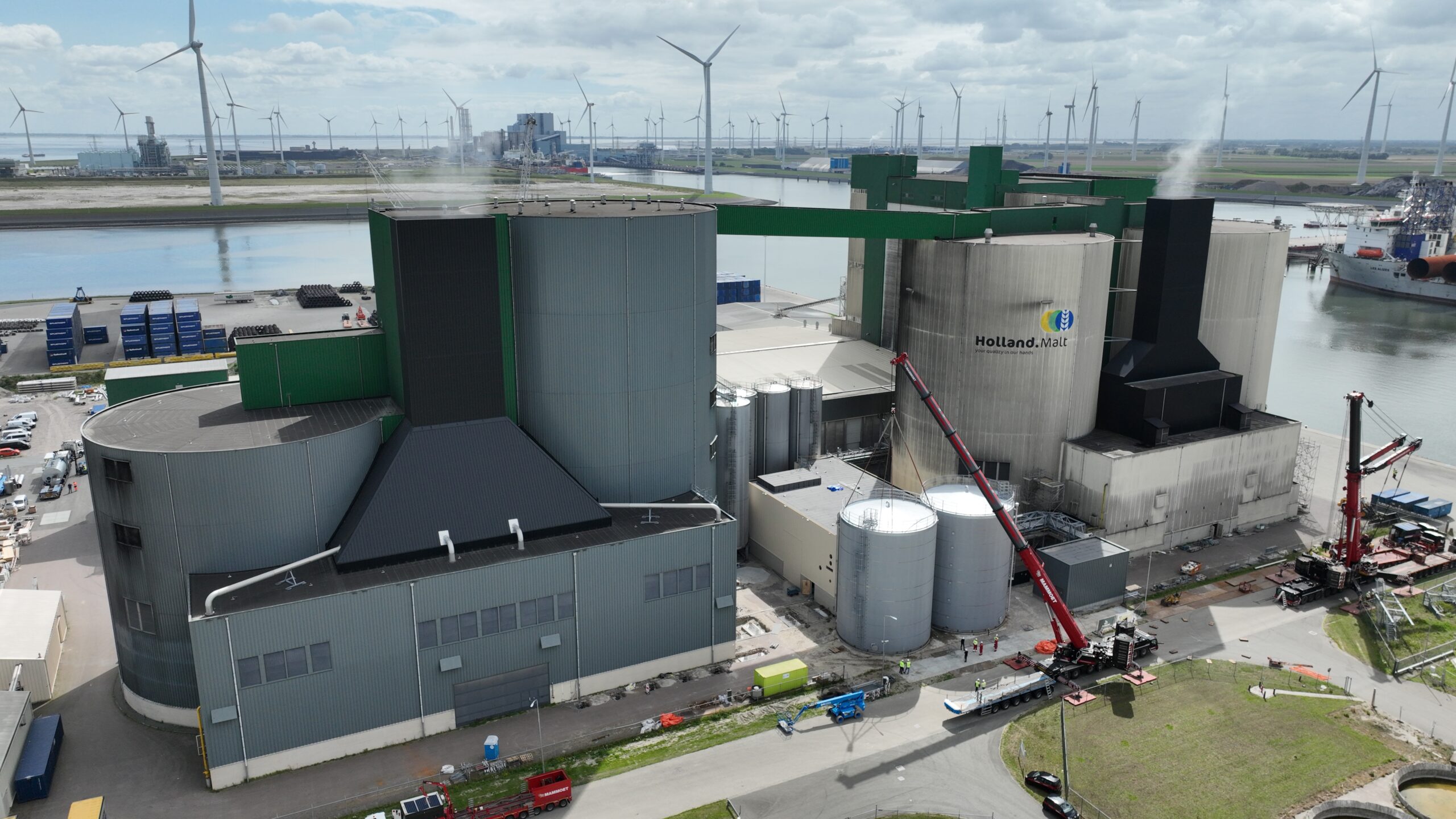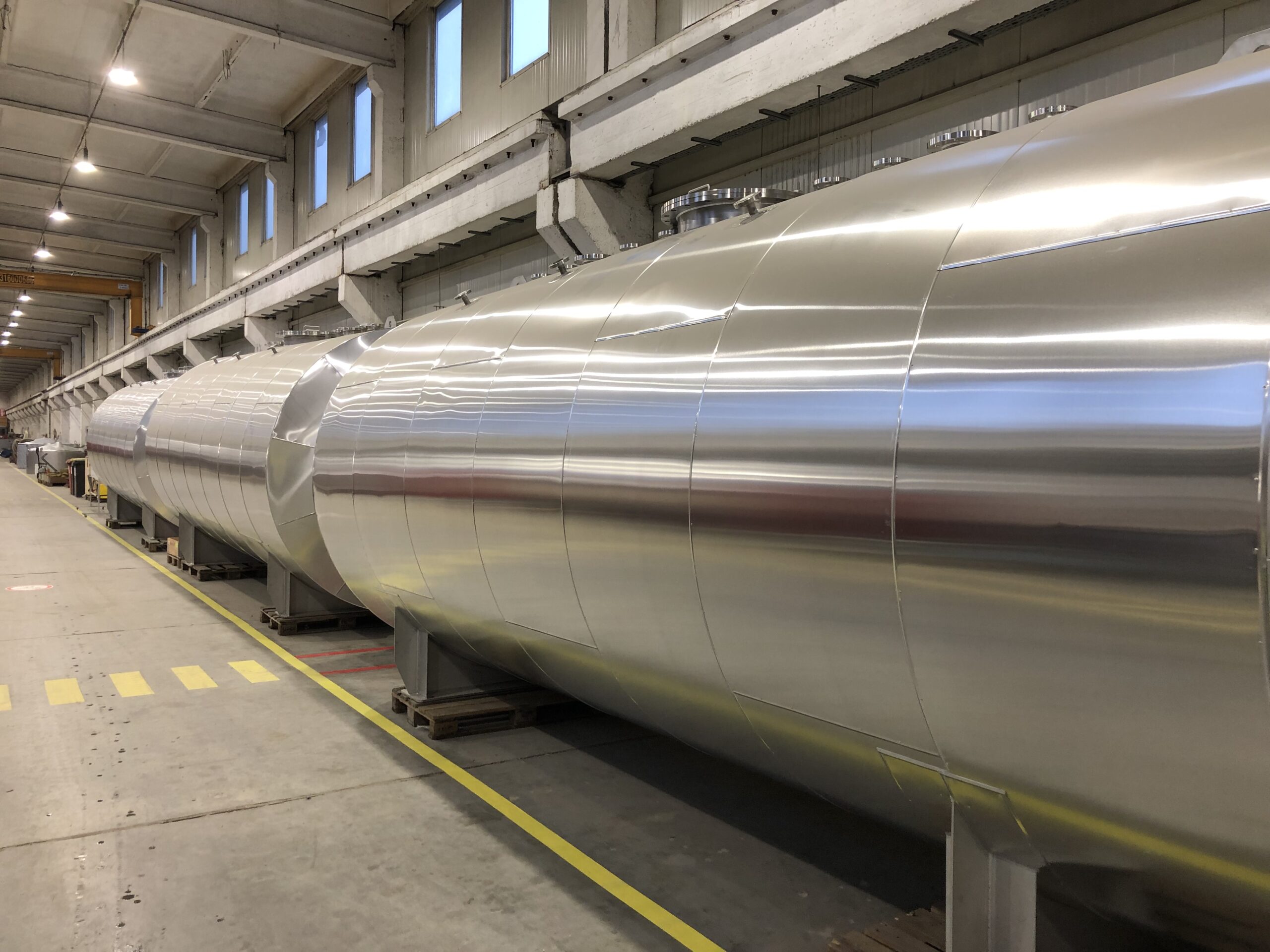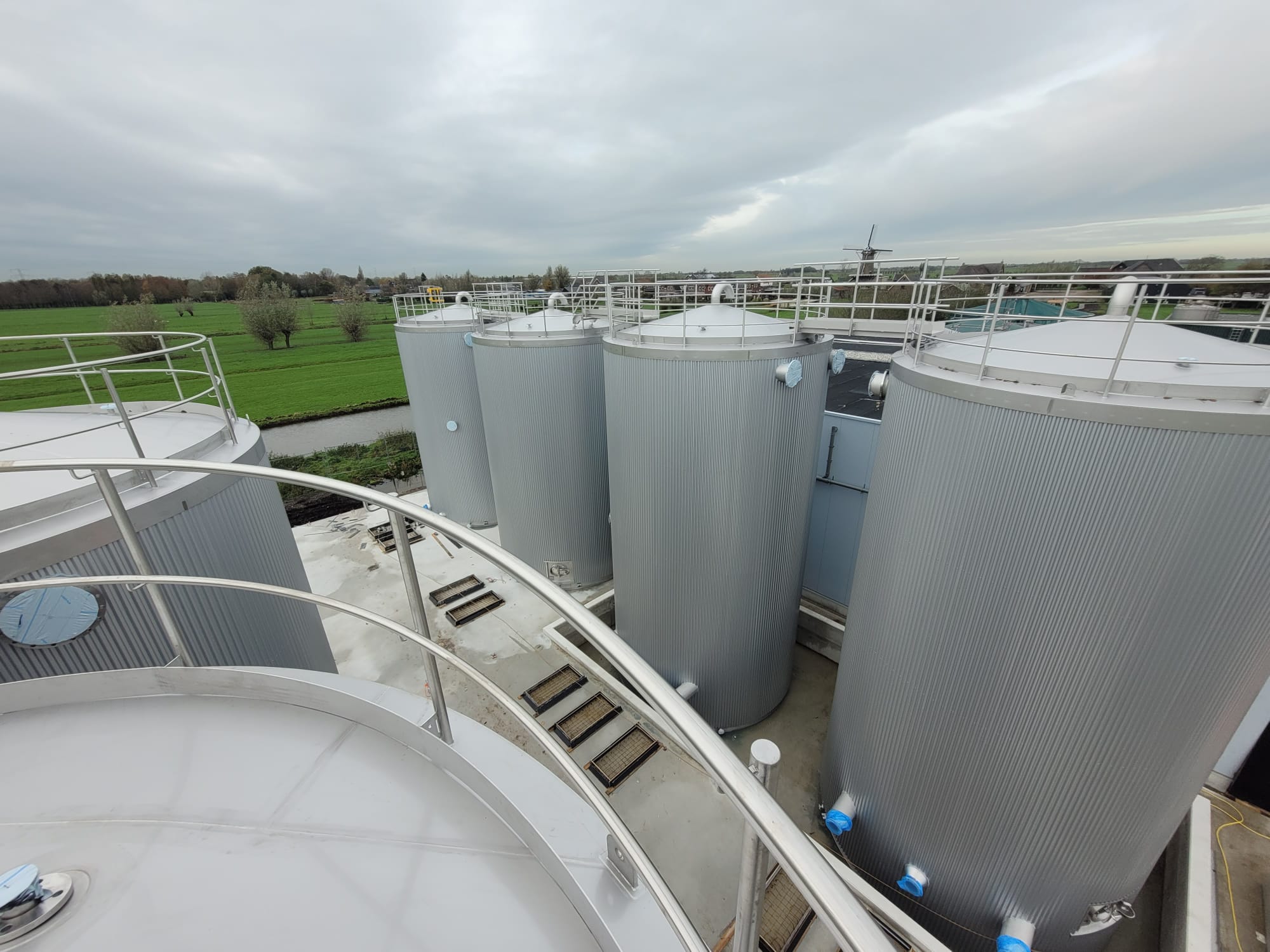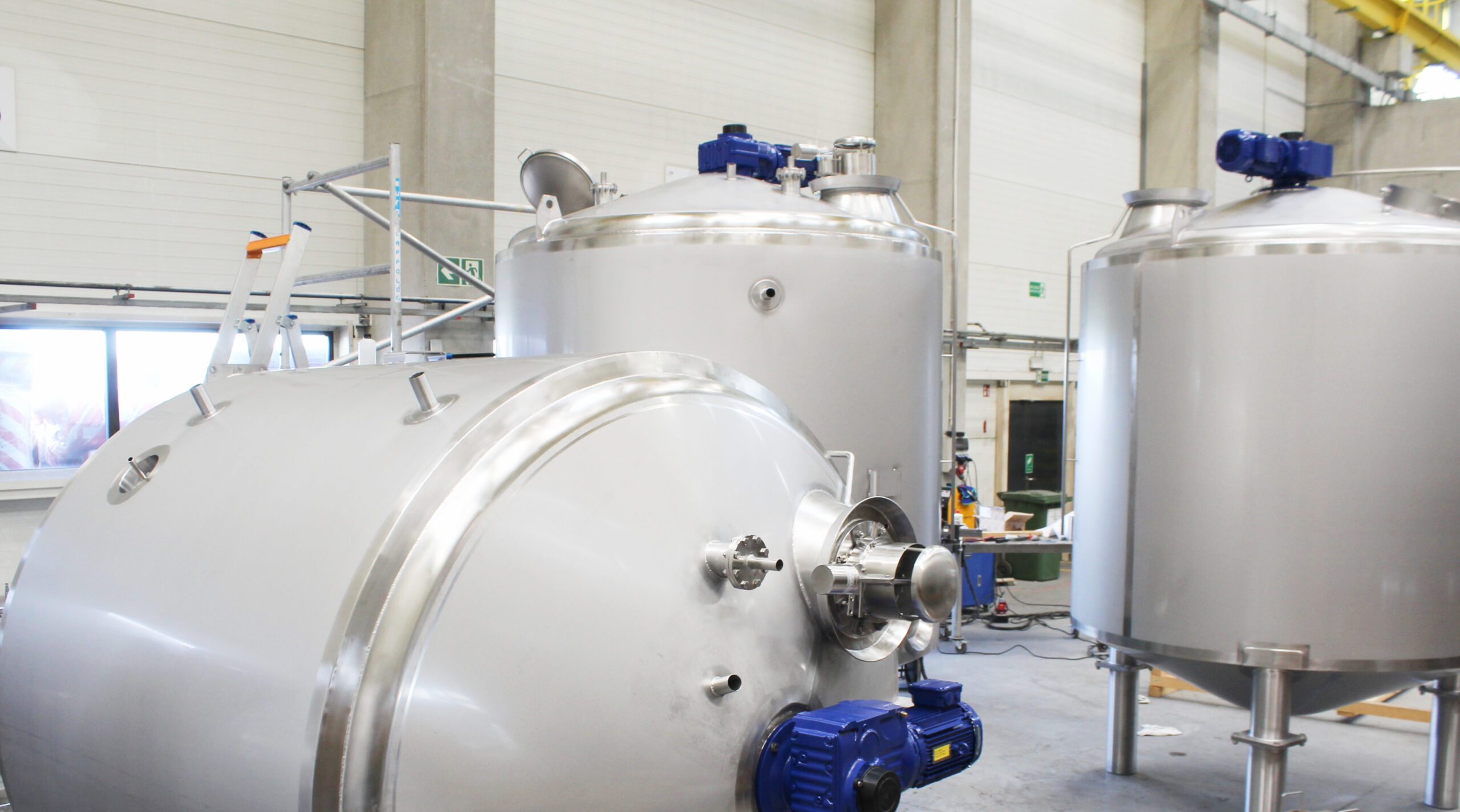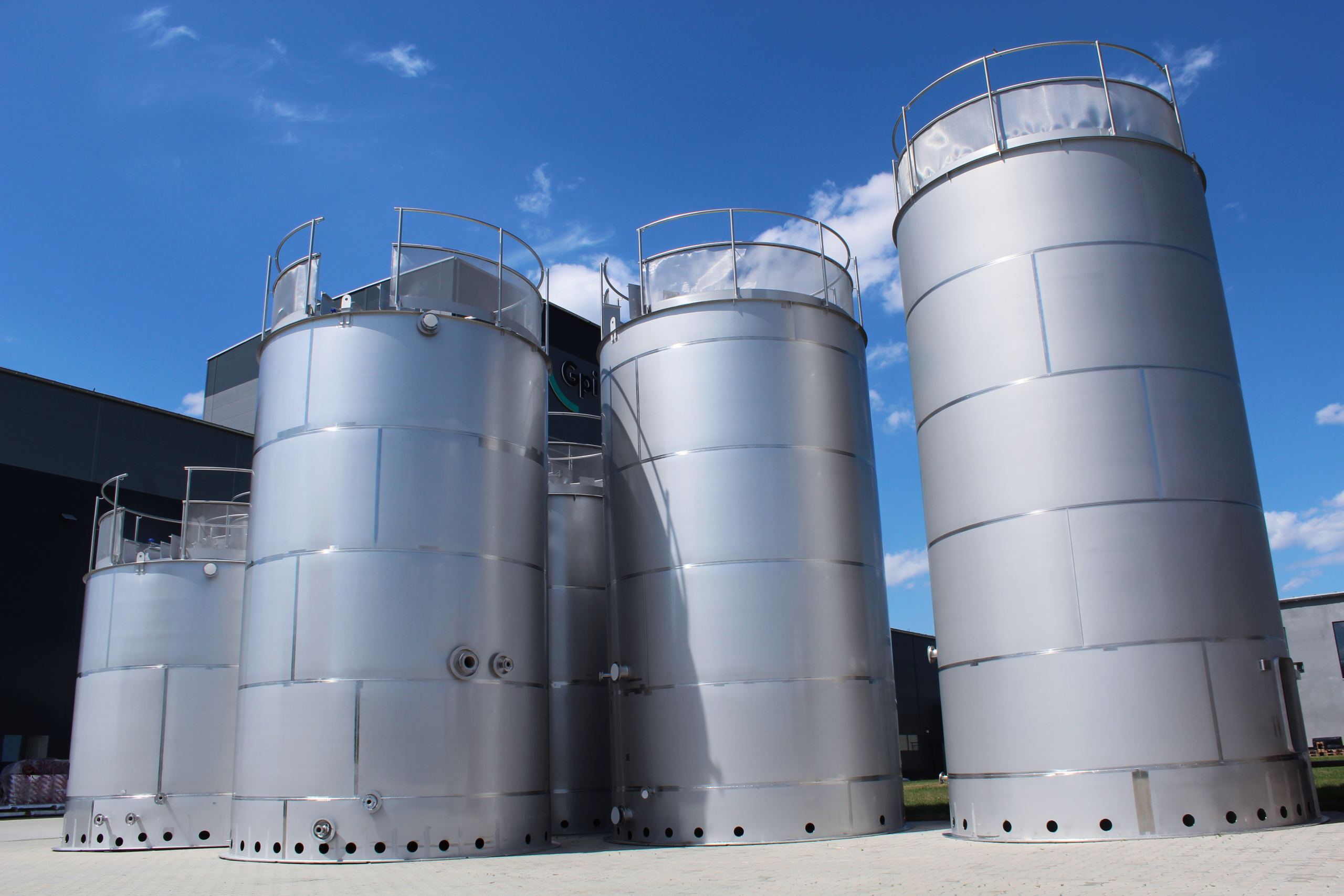The perfect crystalliser

Our expert Leo Smits tells you everything you need to know about
As the leading manufacturer of crystallisers, Gpi is able to provide innovative solutions for the food-processing and pharmaceutical industries. Gpi designs, constructs and installs crystallisation tanks which meet the most stringent quality standards and ensure efficient and manageable processes. Ultimately, it’s all about finding the optimum balance between quality, hygiene, production and control. To this end, Gpi aims to be the very best in Europe
“Simply installing a propeller as if it were a large whisk is going to quickly destroy the crystals.”
In the space of just 21 years, Gpi has grown from being a one-man business to becoming the leading constructor of stainless steel tanks and processing equipment on the Dutch market. Our secret is simple: we have a passion for engineering and an ambition to give our clients the very best. Day-in, day-out, at Gpi we are constantly improving processes so that we can provide solutions perfectly tailored to the needs of the client. Our company is a breeding ground for smart and creative talent which is able to deliver success time and time again.
What is crystallisation?
Crystallisation is a process of phased transition, from fluid, to gas and ultimately to solid form. By cooling a fluid, crystals can be ‘cultivated’: these can then be separated from the fluid through a process of evaporation and drying, before undergoing further treatment. Gpi supplies crystallisation tanks and equipment for the production of lactose from whey, which used to be considered a waste product of cheese, but which now serves as a basis for infant nutrition and sports supplements.
Dairy industry
When it comes to crystallisation, Gpi has some of the largest players in the dairy industry in its portfolio. This can be put down to Gpi’s great flexibility, the economies of scale that we can manage and, of course, the craftsmanship that goes into our products. Amongst other things, crystallisers are used in the food-processing and pharmaceutical industries. There are few sectors of the economy where safety, hygiene and quality have to satisfy such strict requirements as in these two industries. The recent milk powder scandal in China only goes to prove how sensitive food safety is in the minds of consumers. And if something does go amiss in the crystallisation process in the pharmaceutical industry, it could be that the batch you throw away as a result, might be of greater value than the tank it comes out of. That means the bar is set extremely high.
Manageable processing
Crystallisation might seem a simple process. A seed crystal is mixed with a liquid, which is then cooled from temperature A to temperature B within a specific time frame to produce crystals. But all sorts of other aspects are involved. For example: how quickly or slowly do you want to cool; how big or small do the crystals have to be; how quickly should they develop; what degree of purity must they attain; how can the fluid-crystal mix be kept homogenous; how do you prevent the crystals from sinking to the bottom; how do you regulate the auger in such a way that the crystals are not destroyed; and, perhaps most importantly, how do you clean the crystalliser once it has been emptied? In their quest for solutions, these are the questions that have been vexing our engineers and clients’ process control experts. Solutions which make the process manageable, reproducible and hygienic.
Agitator
We can, for example, provide cooling on the outside by means of cooling jackets, but also on the inside using a system of slats through which cooling water circulates. We do this, for instance, with butter-oil crystallisers.
To ensure that crystals which form in the solution do not sink to the bottom, an agitator is installed. But this requires precision engineering. “Simply installing a propeller as if it were a large whisk is going to quickly destroy the crystals.”
Hygiene
At the same time, the more mechanical devices you install in a tank, the more difficult it will be to clean it. The tanks are usually cleaned ‘in place’, without them actually being opened. This is a highly specialised exercise and one that is extremely important. So, for example, if there’s an out-of-reach spot which is nigh on impossible to clean, there´s a big chance you’ll ultimately end up throwing out an entire batch of lactose because of contamination. Worse still, if the contamination remains unnoticed, it might be the consumer who suffers – and then you really do have a problem. At Gpi, we are noticing that we are involved in this process more and more.
Added value
We are only too happy to deliver this. As specialists in tanks and process equipment we provide added value, precisely in those areas we have outlined above. The client has, of course, much more process-related know-how in house, but we retain an overview across a number of sectors. For example, we might apply solutions in the food-processing industry which we have gained as a result of know-how of the pharmaceutical industry, or vice versa.
Close collaboration with the client is therefore a precondition for bringing about good results. Through the best possible triangulation of sales, engineering and client needs, we can ensure that we come up with an initial design which successfully meets the expectations of the client. A willingness and capacity to listen to the client is essential to this. Once the contract has been awarded, our engineering team draws up a technical design before exploring all the finer details of the project with the client. As the design nears completion, all the remaining issues are ironed out until the client is 100% satisfied.
Flexibility
As tank manufacturers we are usually involved at the early stages of construction, which means we must maintain optimum flexibility. This means that if anything changes further along the production chain, we are able to respond quickly and adequately to the change.
What’s more, we must also take into account the life cycle of the equipment. A crystalliser is more than just a tank: it incorporates a motor, valves and other mechanical parts. This means guaranteeing compatibility when it comes to types and makes of motor, for example, so that the client doesn’t end up having to take out several service contracts or have a warehouse full of spare parts from different manufacturers.
Innovation
If required, Gpi can build tanks on location, or otherwise manufacture them at one of our own sites at Lopik or Groot-Ammers at de Lek, so that they only need to be assembled and installed on-site with the client.
Once the crystalliser has been installed, a full evaluation of the project will follow, part of the process that should not be underestimated. Every project is different, and every day means learning something else, be it process- or implementation-related. Likewise, at GPI, this is all part and parcel of our business. Only through this ongoing learning process is it possible for us to continue delivering added value to our clients. And only through know-how can we continue to innovate and retain our leading position in Europe.
